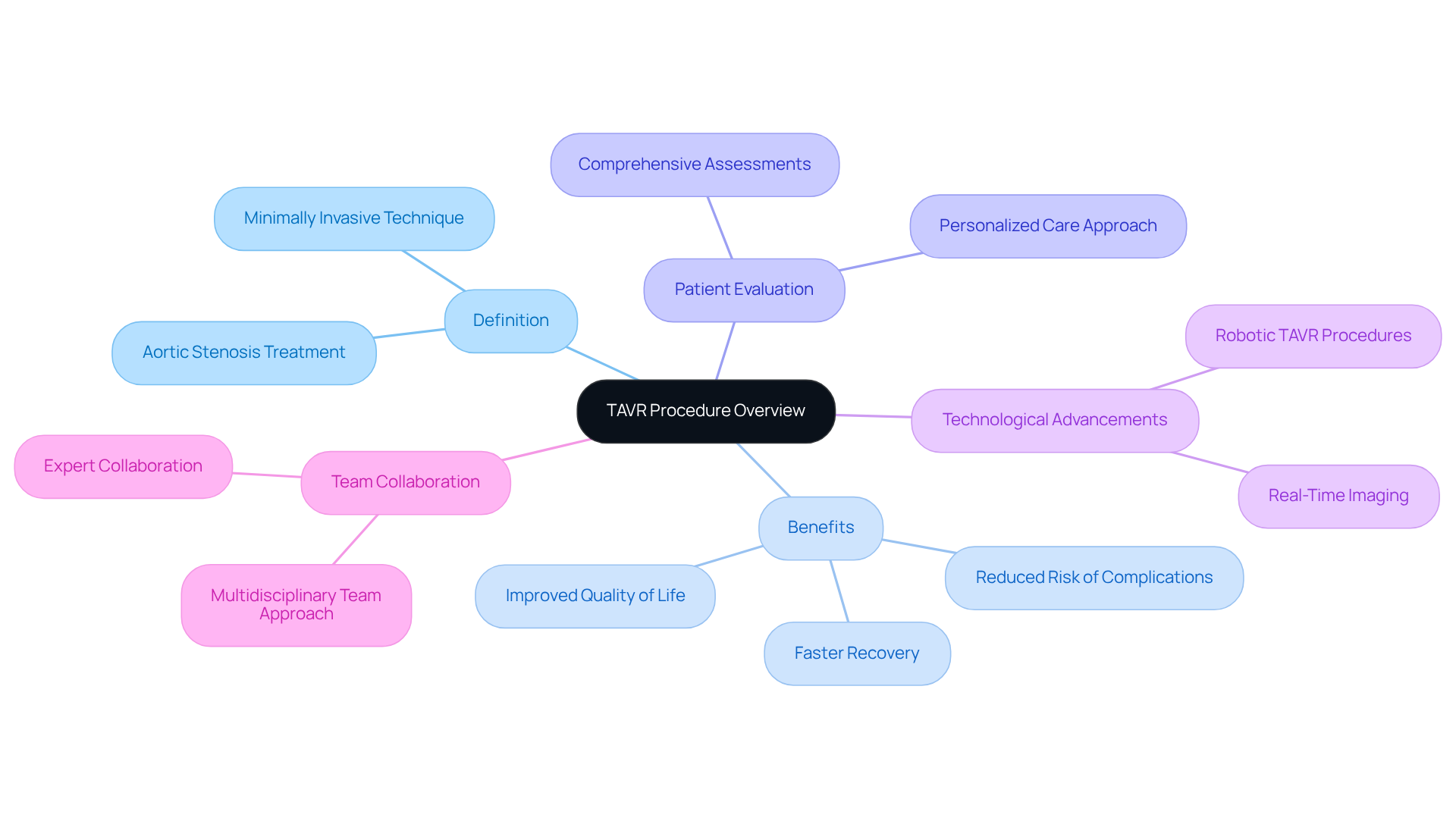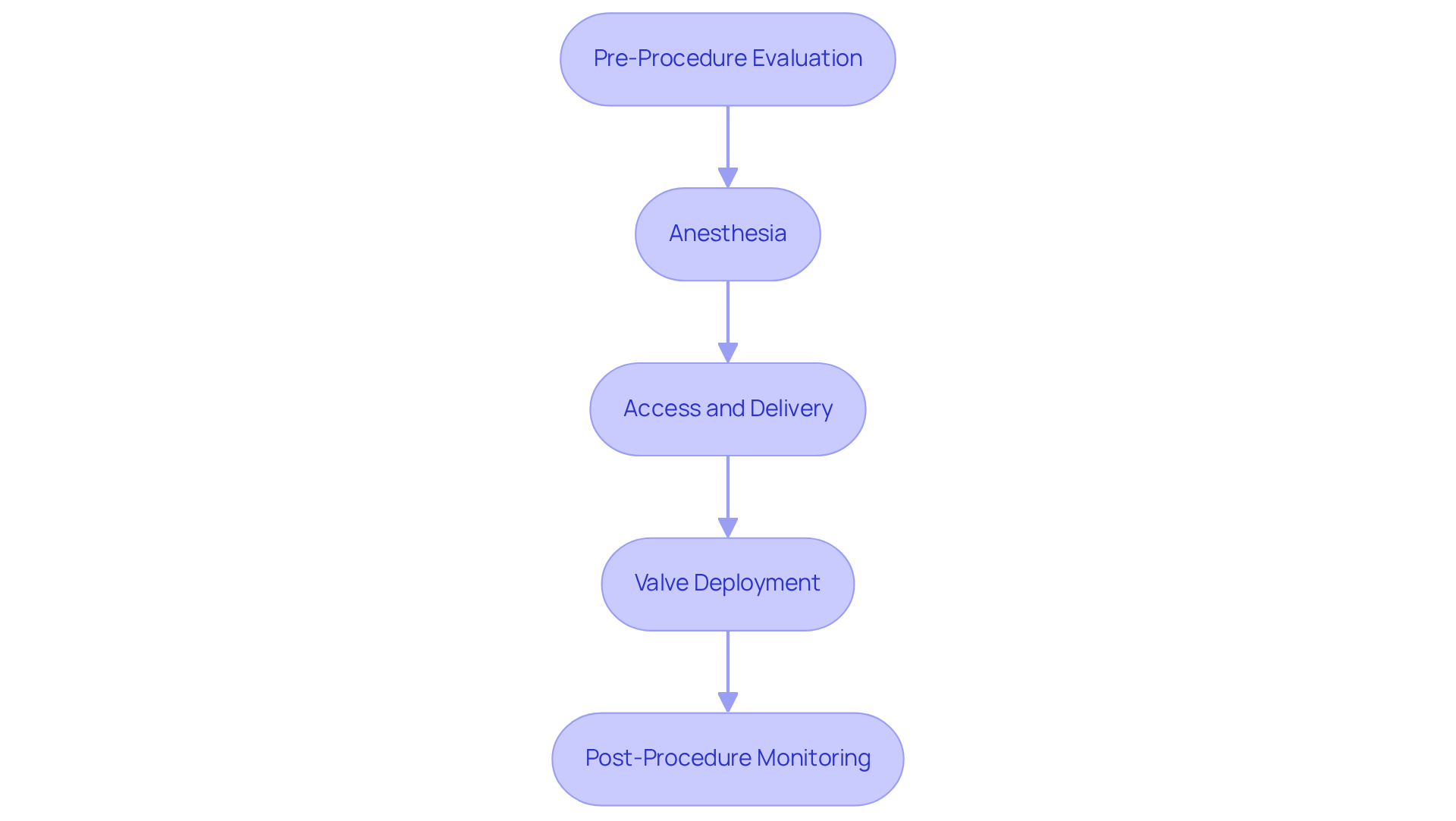


The TAVR (Transcatheter Aortic Valve Replacement) procedure represents a compassionate solution for those facing the challenges of a narrowed aortic valve. This minimally invasive technique is particularly beneficial for high-risk patients who may feel apprehensive about traditional open-heart surgery. With advancements in technology and comprehensive patient care at facilities like Amavita Heart and Vascular Health, many patients can experience quicker recovery times and an improved quality of life.
Have you been feeling overwhelmed by your heart health concerns? You are not alone. Many patients share similar worries, and it's important to know that there are options available to help you regain your well-being. The TAVR procedure not only addresses the physical aspects of your heart condition but also offers emotional reassurance through the support of dedicated healthcare professionals.
In addition to this, the innovative nature of TAVR allows for a smoother recovery journey. Patients often find that they can return to their daily activities much sooner than with traditional surgery, which can be a significant relief. Remember, your health and comfort are our top priorities.
If you have questions or would like to explore this procedure further, please reach out. We are here to support you every step of the way, ensuring that you feel valued and cared for throughout your healthcare journey.
The Transcatheter Aortic Valve Replacement (TAVR) procedure is transforming cardiovascular care, providing hope to patients facing the challenges of aortic stenosis. This innovative, minimally invasive technique not only shortens recovery time but also significantly improves the quality of life for those at high surgical risk, particularly the elderly.
As TAVR gains popularity, many may wonder:
By exploring these questions, we can understand the profound impact of TAVR on modern cardiac treatment, offering reassurance and support for those considering this option.
The tavr procedure video illustrates the groundbreaking minimally invasive technique of Transcatheter Aortic Valve Replacement, aimed at replacing a narrowed aortic valve that fails to open properly, a condition known as aortic stenosis. Unlike traditional open-heart surgery, this procedure is performed through a catheter, typically inserted via the femoral artery in the groin. This approach is less traumatic, leading to quicker recovery times. It's particularly beneficial for individuals at high risk for complications from open-heart surgery, such as the elderly and those with multiple health conditions.
At Amavita Heart and Vascular Health®, we prioritize your well-being by integrating advanced imaging and comprehensive assessments to determine if this procedure is suitable for you. Our personalized, patient-centered approach ensures that you receive the care you deserve. Our CardioElite™ program further enhances this process, providing thorough cardiovascular management to secure the best possible outcomes for those we serve. Transcatheter aortic valve replacement has revolutionized the treatment landscape for aortic stenosis, offering a solution to individuals who previously had limited options. Supported by the American Heart Association and the American College of Cardiology, this procedure has become a preferred choice for older adults and those facing varying levels of surgical risk.
Recent advancements in transcatheter aortic valve replacement technology, highlighted in the tavr procedure video, have significantly improved its effectiveness, with results often surpassing national benchmarks. For instance, a recent case study highlighted a successful robotic valve explant and replacement performed on a 67-year-old woman, allowing her to return home within a week of the procedure.
Cardiologists consistently emphasize the benefits of this procedure, noting its reduced risk of complications, faster recovery, and improved quality of life for patients. As Dr. Abhishek Sharma remarked, 'This milestone is a testament to the incredible collaboration and dedication of our entire heart team.' As the field continues to evolve, TAVR remains at the forefront of minimally invasive cardiovascular therapies, providing hope and improved health outcomes for those affected by aortic stenosis. Our multidisciplinary team carefully evaluates each patient, ensuring optimal results and reassuring you about the quality of care you will receive.

Patients with severe valve narrowing often find themselves in a challenging situation, historically facing limited treatment choices. Open-heart surgery, while sometimes necessary, carries significant risks, particularly for older adults. Thankfully, the advent of the TAVR procedure video has transformed this landscape, offering a minimally invasive option that can be performed under local anesthesia. This procedure has been acknowledged by the American Heart Association as a significant breakthrough in cardiac treatment, especially beneficial for individuals who may be deemed unfit for traditional surgical methods.
As our population ages, the need for effective, less invasive therapies like transcatheter aortic valve replacement is expected to rise. This highlights its essential role in modern cardiovascular medicine. Research indicates that individuals who watch the TAVR procedure video experience improved long-term outcomes, including reduced risks of mortality and stroke. Such findings further emphasize its importance in enhancing the quality of life for older individuals.
Moreover, the integration of Amavita's CardioElite™ program enriches this experience by offering comprehensive cardiovascular management. This includes advanced diagnostic tools and 24/7 cardiology consultation, ensuring timely interventions and personalized care. This holistic approach not only improves outcomes for patients but also significantly lowers readmission rates, making this procedure a compelling choice for older adults seeking a brighter, healthier future.

The TAVR procedure involves several essential steps designed to provide effective treatment for aortic stenosis, ensuring that patients feel supported throughout their journey:
Pre-Procedure Evaluation: A thorough assessment is conducted, including advanced imaging studies such as echocardiograms and CT scans, along with consultations with a multidisciplinary team at Amavita Heart and Vascular Health. This careful evaluation confirms each individual's suitability for TAVR, especially crucial for those at high risk. We want to ensure that every factor is considered before moving forward, providing you with peace of mind.
Anesthesia: Most patients receive local anesthesia combined with sedation, allowing them to remain comfortable and aware during the procedure. Your comfort is our priority.
Access and Delivery: A catheter is gently inserted through the femoral artery, guiding the new device to the heart. This step is performed with utmost care.
Valve Deployment: The new device is placed within the affected structure and expanded, often utilizing a balloon to ensure a secure fit and optimal blood flow. This process is crucial for your recovery.
Post-Procedure Monitoring: After the procedure, patients are closely observed for any complications. Many are able to return home within four to seven days, reflecting a significant reduction in recovery time compared to traditional open-heart surgery, which often requires longer hospital stays. Dr. Martinez-Clark specializes in minimally invasive procedures, which can dramatically enhance your breathing and energy levels, often allowing for same-day discharge.
Recent advancements in transcatheter aortic valve replacement methods, including robotic-assisted procedures, have further improved outcomes for individuals. For example, a pioneering robotic heart valve replacement procedure successfully substituted both the aortic and mitral valves in a patient with early valve failure, enabling her to be released in under a week. This highlights the efficiency and effectiveness of TAVR as a treatment option.
Overall, the TAVR procedure video shows that TAVR not only provides a less invasive alternative to conventional surgery but also promotes a faster recovery, allowing you to return to your normal activities within weeks. Before going home, patients receive guidance on self-care, including diet, exercise, and incision site care. It’s important to be aware of the need for follow-up tests, such as echocardiograms and EKGs, to monitor the new valve's functionality. Additionally, individuals should refrain from driving for 72 hours after the procedure to ensure a safe recovery. We are here to support you every step of the way.

Transcatheter Aortic Valve Replacement (TAVR) offers numerous benefits, especially for individuals at high risk, reflecting Amavita's commitment to innovative cardiovascular care. Are you or a loved one facing heart challenges? Here are some key advantages to consider:
While these benefits are significant, it’s important to acknowledge that TAVR is not without risks. Potential complications may include bleeding, infection, and valve-related issues such as paravalvular leak. Concerns about increased rates of residual valve regurgitation and the need for permanent pacemakers also exist. Engaging in thorough discussions with your healthcare providers at Amavita is essential to understanding these risks and making informed decisions about your treatment options. The TAVR procedure video highlights the efficiency of TAVR procedures, fostering a patient-friendly model that makes it an increasingly popular choice for those dealing with severe aortic stenosis. Remember, you are not alone in this journey, and support is always available.

The TAVR procedure represents a significant advancement in the treatment of aortic stenosis, offering a minimally invasive alternative to traditional open-heart surgery. By utilizing a catheter-based approach, TAVR not only reduces the trauma associated with heart surgery but also enhances recovery times and overall patient outcomes. This innovative technique is particularly advantageous for older adults and those at high risk for surgical complications, making it a vital option in modern cardiovascular care.
Throughout the article, key points highlight the comprehensive nature of the TAVR process, from pre-procedure evaluations to post-operative care. The integration of advanced imaging technologies and the personalized approach of programs like Amavita's CardioElite™ ensure that patients receive the best possible care tailored to their unique needs. Furthermore, the benefits of TAVR, including improved quality of life and reduced mortality rates, underscore its importance in treating severe aortic stenosis effectively.
As the demand for less invasive cardiac therapies continues to grow, the TAVR procedure stands out as a beacon of hope for many individuals facing heart challenges. Embracing this innovative treatment can lead to a brighter, healthier future. It is essential for patients and healthcare providers alike to stay informed about the advancements in TAVR technology and its implications for patient care. Whether watching the TAVR procedure video or discussing options with a healthcare professional, understanding this procedure can empower individuals to make informed decisions about their heart health. Together, we can navigate these choices with confidence and care.
What is the TAVR procedure?
The TAVR (Transcatheter Aortic Valve Replacement) procedure is a minimally invasive technique aimed at replacing a narrowed aortic valve that fails to open properly, a condition known as aortic stenosis. It is performed through a catheter, typically inserted via the femoral artery in the groin.
How does TAVR differ from traditional open-heart surgery?
Unlike traditional open-heart surgery, TAVR is less traumatic as it is performed through a catheter, leading to quicker recovery times. This makes it particularly beneficial for individuals at high risk for complications from open-heart surgery, such as the elderly and those with multiple health conditions.
Who is a suitable candidate for the TAVR procedure?
The TAVR procedure is suitable for individuals with aortic stenosis, especially those who are at high risk for complications from open-heart surgery. This includes older adults and patients with multiple health conditions.
What kind of support does Amavita Heart and Vascular Health® provide for TAVR patients?
Amavita Heart and Vascular Health® prioritizes patient well-being by integrating advanced imaging and comprehensive assessments to determine TAVR suitability. They offer a personalized, patient-centered approach and have a CardioElite™ program for thorough cardiovascular management.
What advancements have been made in TAVR technology?
Recent advancements in TAVR technology have significantly improved its effectiveness, with results often surpassing national benchmarks. Notable cases, such as a successful robotic valve explant and replacement, demonstrate these advancements.
What are the benefits of the TAVR procedure?
The benefits of the TAVR procedure include a reduced risk of complications, faster recovery times, and improved quality of life for patients.
How does the TAVR procedure impact patient outcomes?
The TAVR procedure has revolutionized treatment for aortic stenosis, providing hope and improved health outcomes for those affected, especially those with limited treatment options.
What role does the multidisciplinary team play in the TAVR process?
A multidisciplinary team carefully evaluates each patient undergoing TAVR to ensure optimal results and to reassure them about the quality of care they will receive.